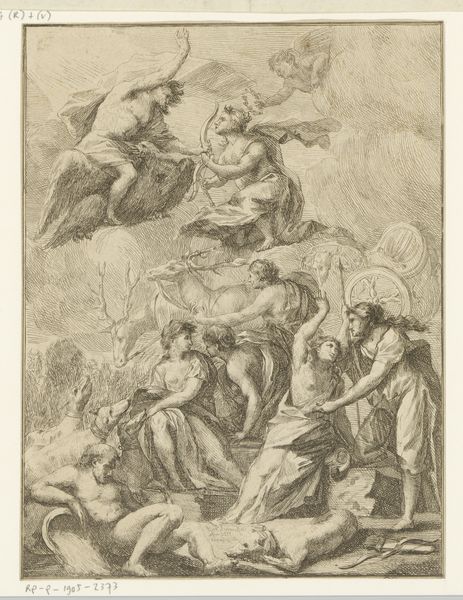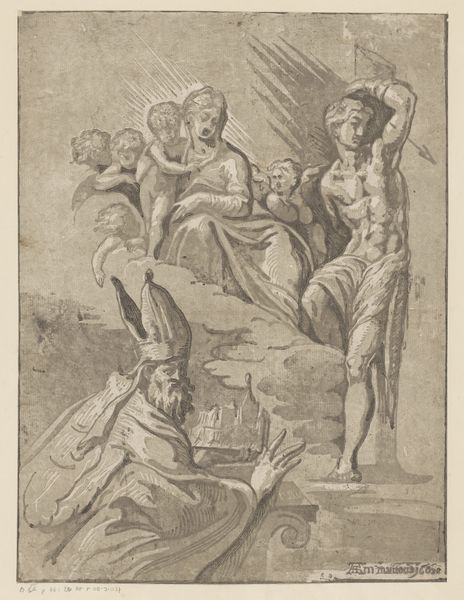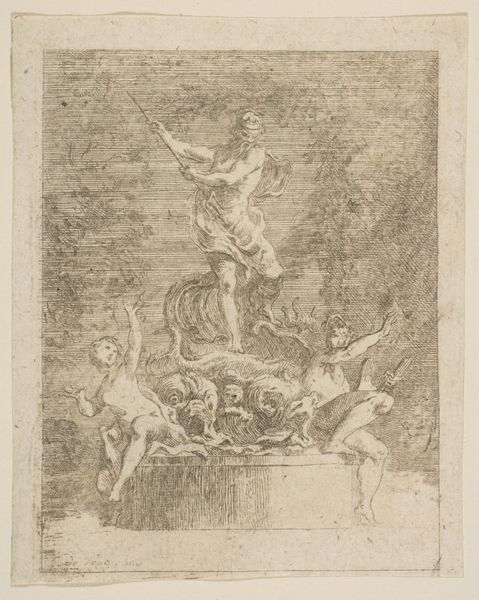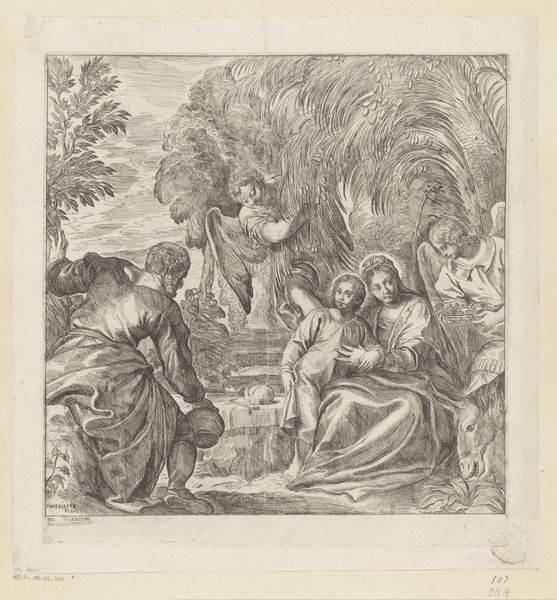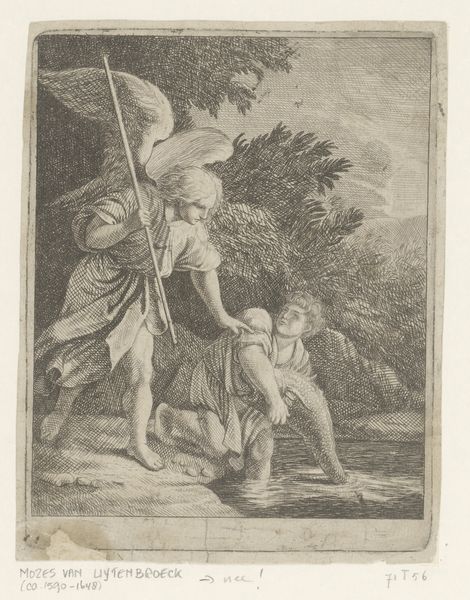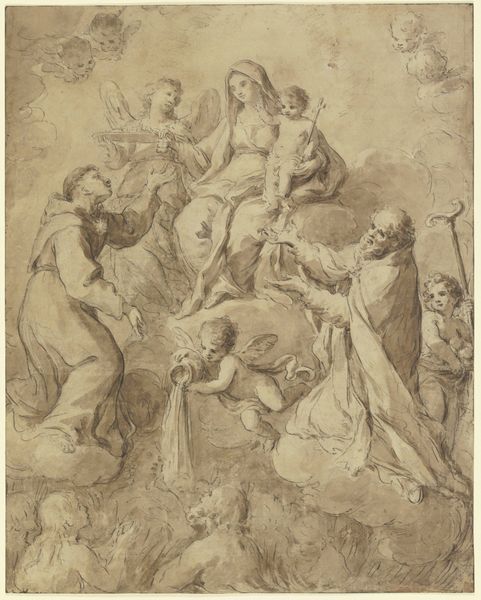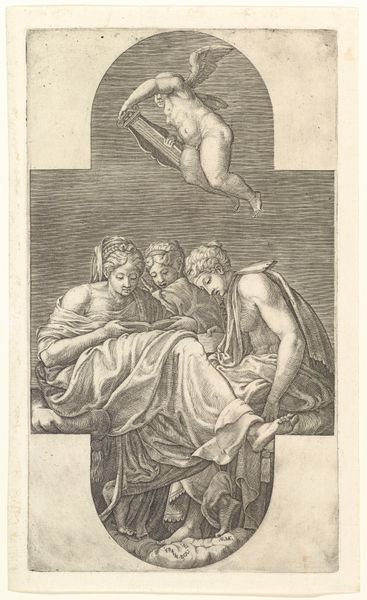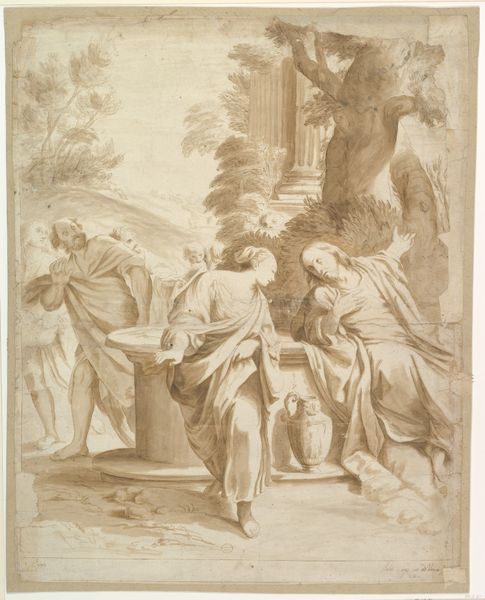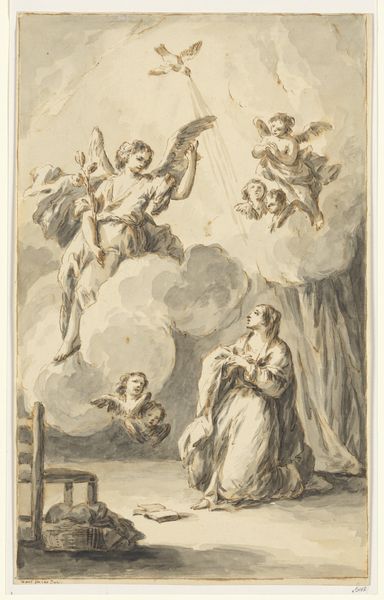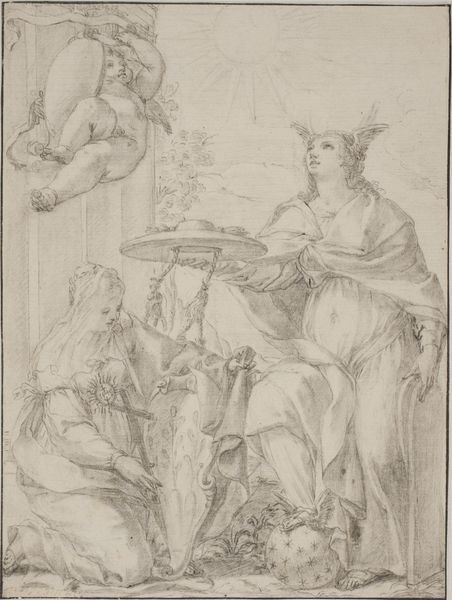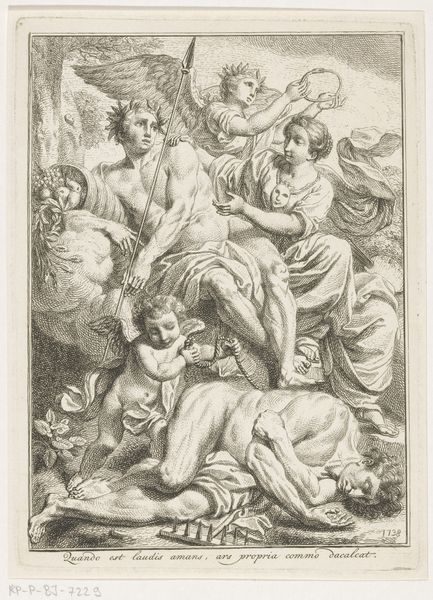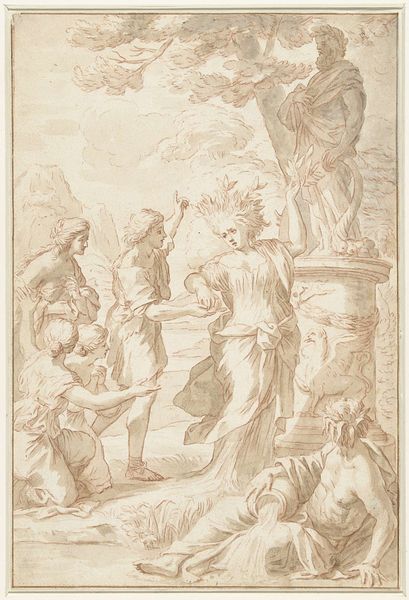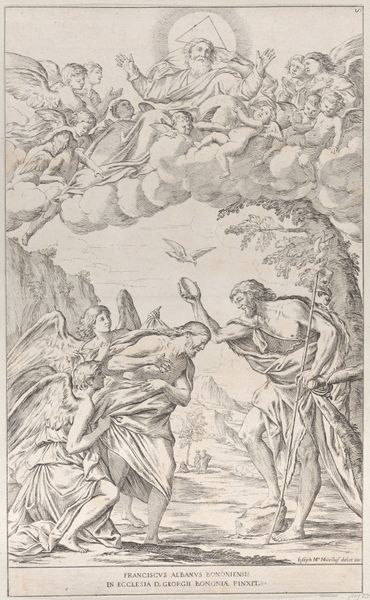
drawing, print, paper, ink, pencil, chalk, charcoal
#
drawing
#
allegory
# print
#
landscape
#
classical-realism
#
charcoal drawing
#
mannerism
#
figuration
#
paper
#
ink
#
pencil
#
chalk
#
charcoal
#
history-painting
Dimensions: 276 × 235 mm
Copyright: Public Domain
Curator: Look at this gossamer-thin drawing, a preliminary sketch for "Mercury and Herse," created around 1649 by Laurent de La Hyre. Editor: It feels like a dream, almost faded, like trying to recall something exquisite from the edges of sleep. Such delicate lines, everything sketched with such economy of means. Curator: Precisely. He used a combination of charcoal, chalk, pen, and ink on paper to conjure this scene. What strikes you about it in terms of his process? Editor: Well, look closely at Herse on bended knee; La Hyre meticulously constructed form and volume using multiple, soft, overlapping strokes. It looks labor intensive and almost contrasts with the fleeting Mercury up above. Also notice the cross-hatching and varied stroke weights throughout the drawing: evidence of layering and revision that can be easily overlooked in the final presentation of allegorical painting. I'm curious about how the means translate to a final product, perhaps on a grand scale, intended for consumption. Curator: He was indeed aiming for a large history painting, and I see your point, that contrast is very insightful! You see the figures in their classical robes and perhaps some historical symbolism there? Editor: Oh absolutely. The flowing robes suggest available fabrics, likely imported, pointing towards larger trade dynamics of the era. Even the choice of portraying Mercury—a figure symbolizing commerce—indicates a connection to real-world material concerns, though obscured through myth and high artifice. We cannot ignore how allegory intersects with economic drivers of 17th-century Europe. Curator: Interesting observation about commerce manifesting in art through symbolic depiction. For me, though, it's about capturing that ephemeral moment of a god's descent, an attempt to materialize something divine, to anchor it in the earthly realm through drawing. But your perspective anchors the divinity in something earthly to begin with...food for thought! Editor: And perhaps La Hyre was thinking of earthly sustenance too, capturing how art both reflects and shapes perceptions of material realities.
Comments
No comments
Be the first to comment and join the conversation on the ultimate creative platform.
